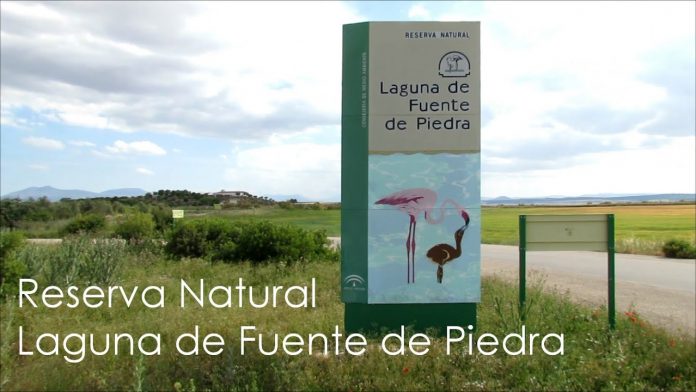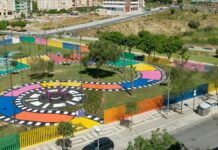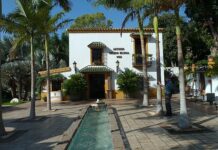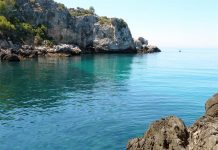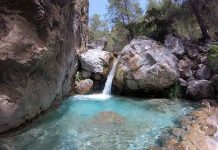The Fuente de Piedra Natural Reserve is an ecologically valuable wetland located in the northwest of the province of Málaga, in the region of Antequera, within the municipality of Fuente de Piedra. It covers an area of approximately 1,400 hectares, making it the largest reserve in Andalusia and one of the largest in Spain.
It was declared a Ramsar site in 1983, a natural reserve in 1984, a Special Protection Area for Birds (SPA) in 1988, and a Special Conservation Area (SCA) in 2013.
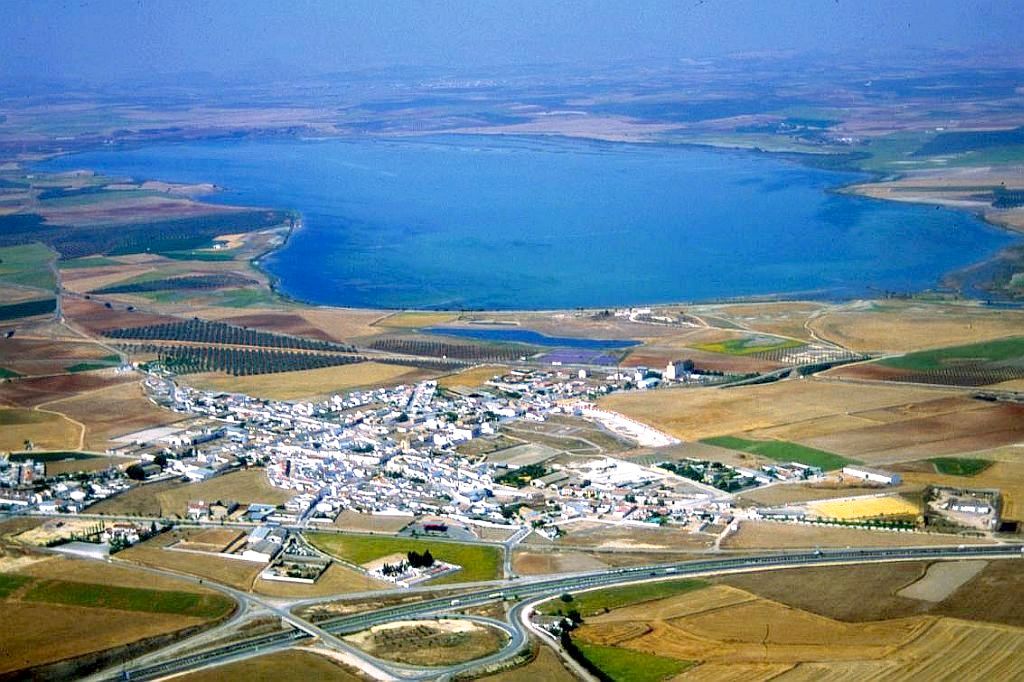
Characteristics of Fuente de Piedra Natural Reserve
The Fuente de Piedra Lagoon is approximately 6.5 km long and 2.5 km wide, with a perimeter of 18 km. Its depth usually does not exceed 2 meters. Along with other nearby lagoons in the Antequera area, it forms a natural reserve of approximately 3,000 hectares of wetlands.
The neighboring lagoons include Campillos, La Ratosa, El Laguneto, and Cantarranas, which have similar characteristics and collectively support a variety of waterfowl communities.
The lagoon extends across gentle terrain covered with olive groves and cereal fields.
Its origin of the lagoon is associated, according to one of the most accepted hypotheses, with karstic dissolution and subsidence processes.
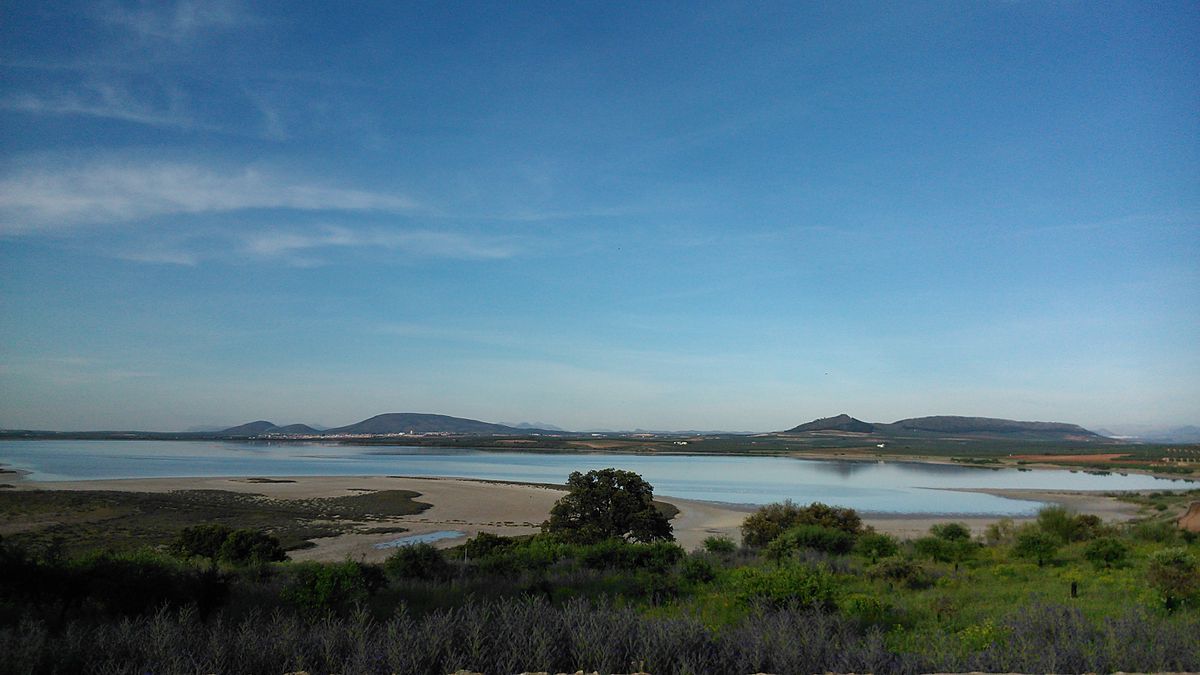
Geography, Geology, and Hydrology
The Fuente de Piedra Lagoon, with its slightly kidney-shaped elliptical form, is located within the Betic mountain ranges, mainly in the Subbetic Zone. The lagoon lies on the boundary between the Atlantic and Mediterranean watersheds of the Guadalquivir River.
It is an endorheic or closed drainage lagoon with high salinity resulting from the deposition of salt and gypsum from dissolved materials. It also receives temporary water inputs from precipitation, runoff from the Santillán and El Humilladero streams, and groundwater from the surrounding aquifers.
The lagoon experiences alternating periods of flooding and drought. In spring, increased evaporation causes the salt in the Fuente de Piedra Lagoon to crystallize on its surface.
What to see in Fuente de Piedra Lagoon?
Flora
The main vegetation found in Fuente de Piedra Lagoon is adapted to saline environments and holds great botanical value. Halophytic vegetation such as reeds, rushes, cane, and Mediterranean shrubs can be observed. On clay soils, plants like saltwort and salt cedar thrive, along with other species typical of arid and dry grasslands.
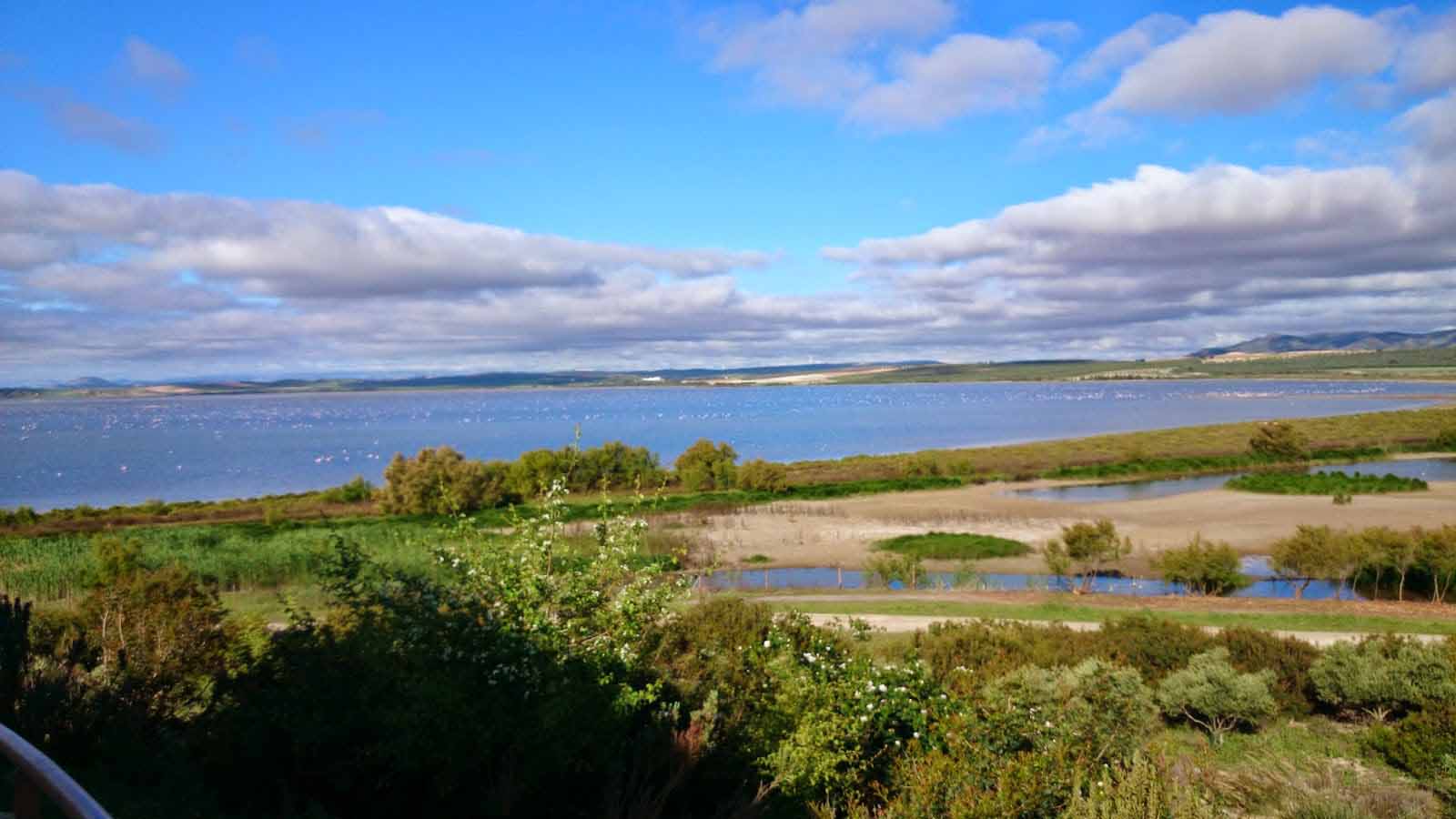
At the edges of the lagoon and extending into the water, there is tree vegetation consisting of tamarisks, which often form groves that serve as important areas during the breeding season of certain bird species.
Fauna
Among mammals, you can find the garden dormouse and the water vole, as well as rabbits, hares, foxes, and badgers.
The most significant animal presence in this area is the vast number of bird species, with nearly 200 cataloged. Waterfowl, in particular, stand out.
Flamingos
Fuente de Piedra Lagoon is the most important site for regular breeding of the Greater Flamingo (Phoenicopterus roseus). It hosts the largest colony of Greater Flamingos (rose-colored) in the Iberian Peninsula and the second largest in Europe. Up to 20,000 breeding pairs of flamingos have been recorded.

A significant portion of the flamingos born in Fuente de Piedra Lagoon spends the winter in Morocco, particularly at the mouth of the Muluya River, the coastal lagoon of Mar Chica, or the Souss-Massa National Park.
During the chick-rearing period, the feeding areas used by adults are the salt pans of Cabo de Gata, the Marismas del Odiel, and primarily, the Marismas del Guadalquivir. Tracking of ringed individuals has revealed that the flamingos breeding in Fuente de Piedra feed in wetlands within a 200 km radius of the colony.
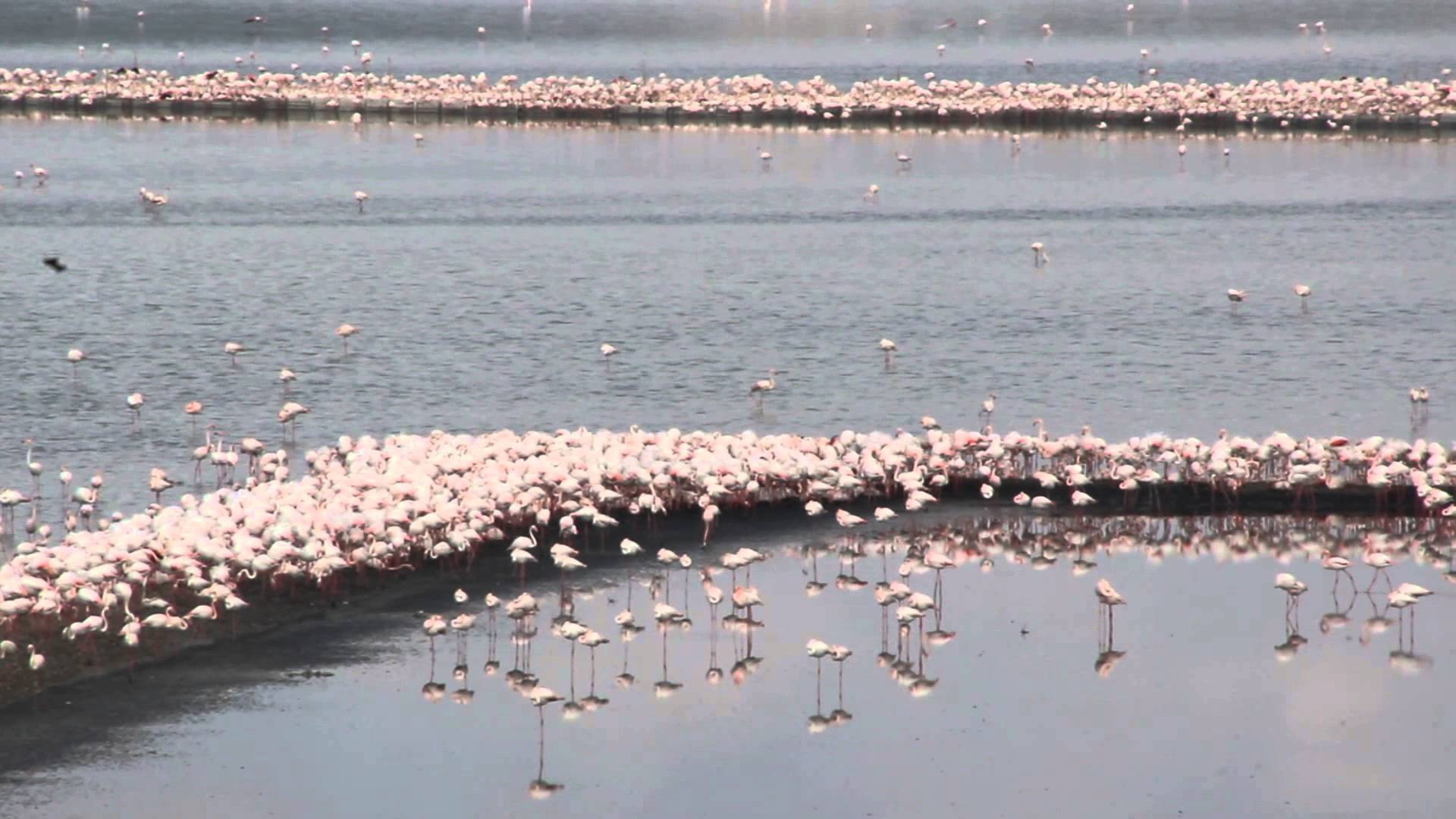
In addition to the Greater Flamingo, which is the most characteristic bird of the lagoon, more than 150 waterbird species can typically be observed. These birds use the lagoon as a breeding ground, wintering site, or migratory stopover. Among them, you can find the white-headed duck, slender-billed gull, whiskered tern, purple heron, black-winged stilt, common goose, and Eurasian spoonbill. The lagoon also serves as a wintering and migratory stopover for many other bird species, including raptors and waders.
The bird ringing activities conducted in the area are of such interest that every year numerous people gather to participate in this scientific endeavor.
Activities to do in Fuente de Piedra Natural Reserve
In addition to enjoying the beautiful nature, Fuente de Piedra Lagoon offers various viewpoints to facilitate birdwatching. Among them, we have the Las Vicarias Viewpoint and the La Madriguera area.
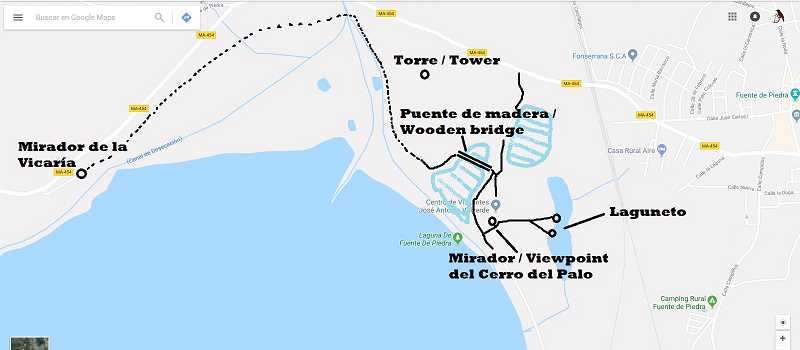
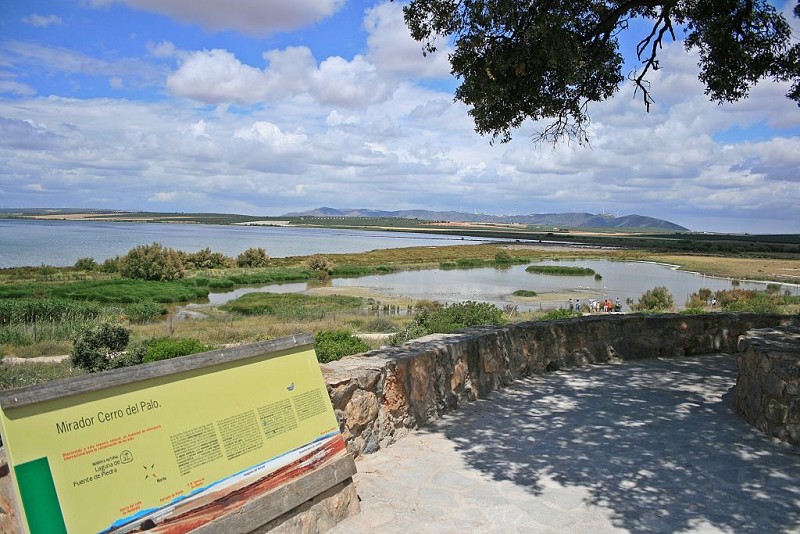
There are trails like El Laguneto and Las Albinas that connect one lagoon to another, perfect for hiking.

Following the path around the lagoon, it is very common to find people enjoying cycling.
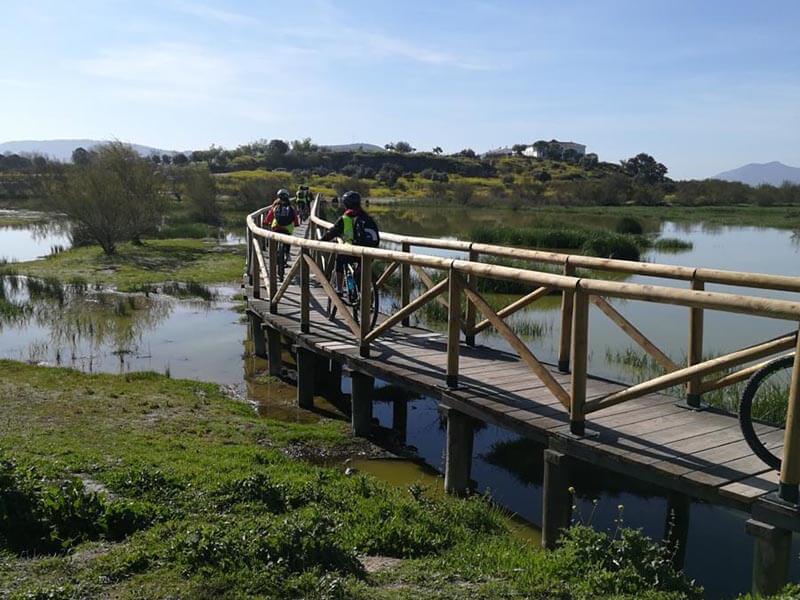
Experience an exciting outdoor adventure with children and share a unique experience with the little ones.
It is important to wear appropriate clothing for the season, good walking shoes, and preferably waterproof gear. Don’t forget to bring binoculars to spot the flamingos.
The best time to observe the flamingos is in spring, especially in the early morning.
IF YOU FEEL LIKE SPENDING A DAY WITH YOUR FAMILY AND CHILDREN, SURROUNDED BY NATURE, YOU MUST VISIT FUENTE DE PIEDRA LAGOON.
How to get to Fuente de Piedra Natural Reserve?

